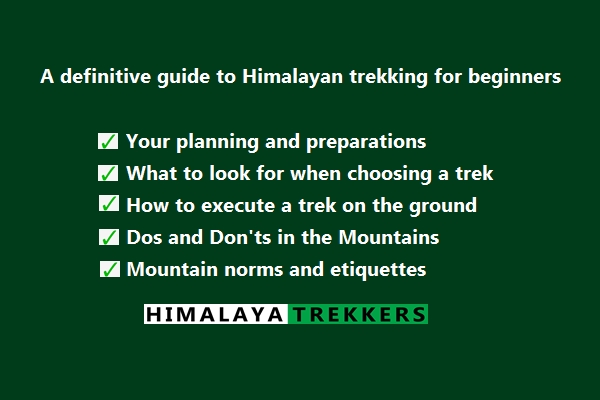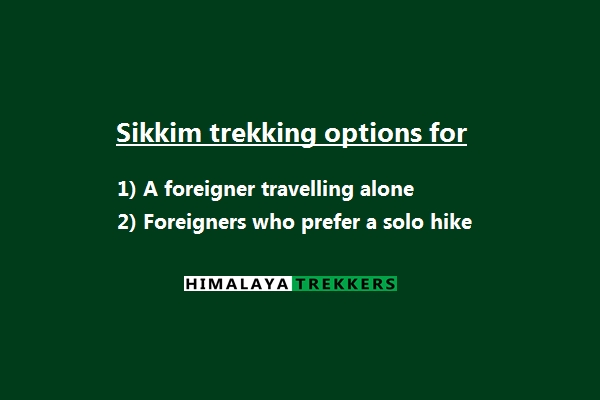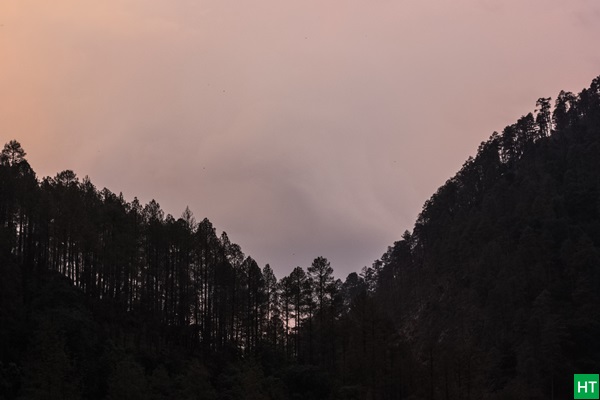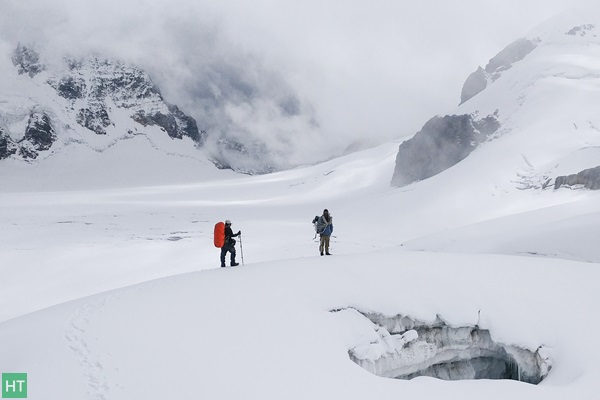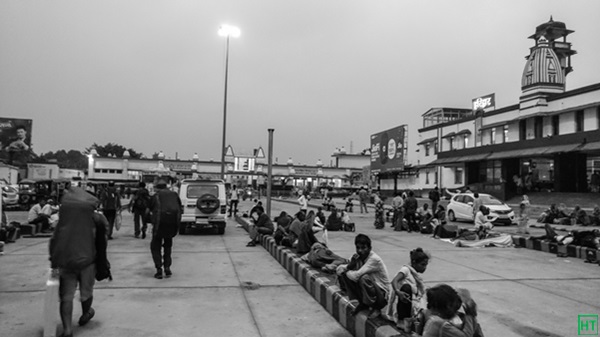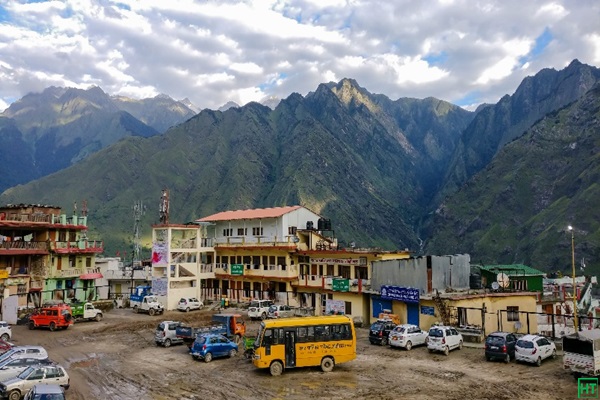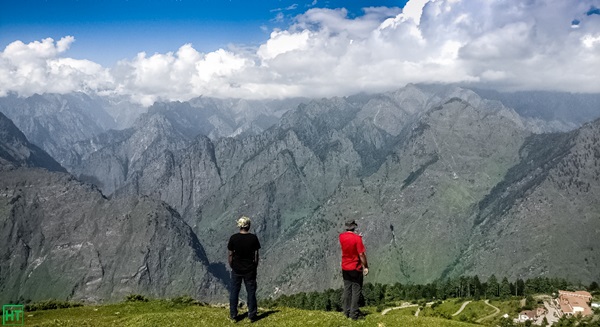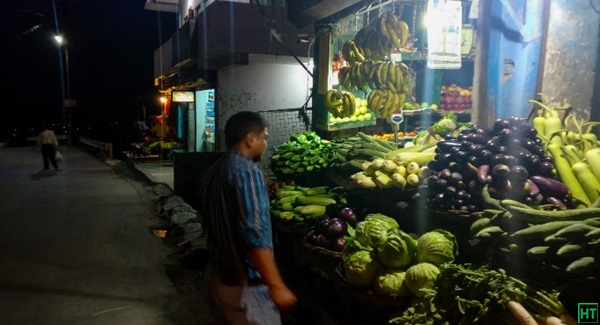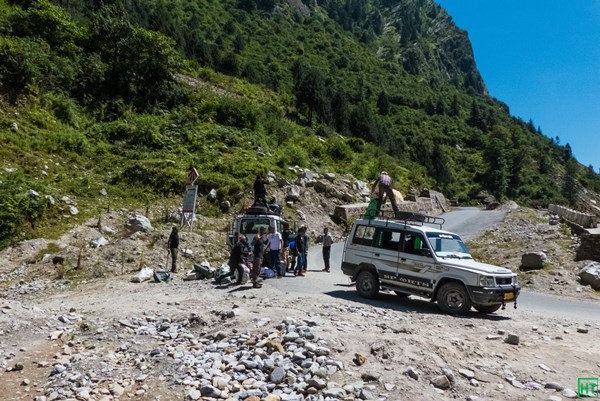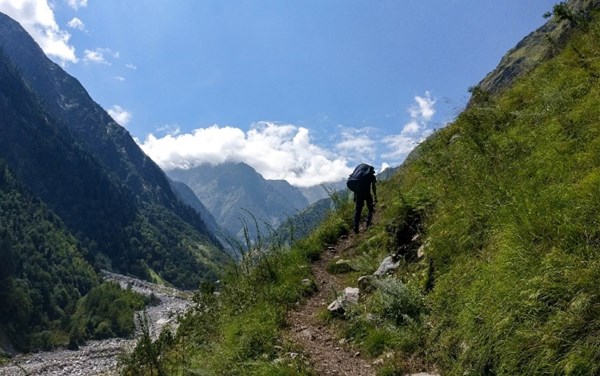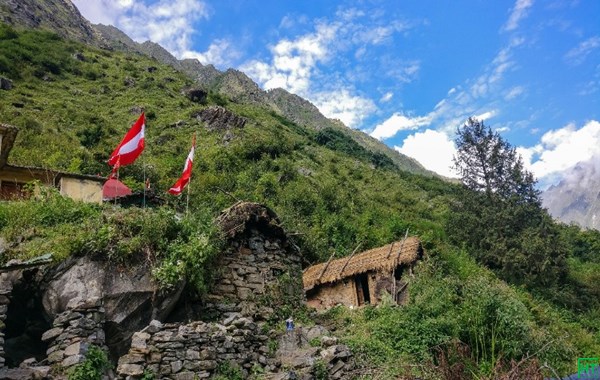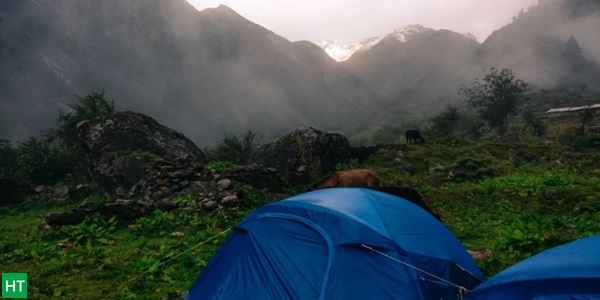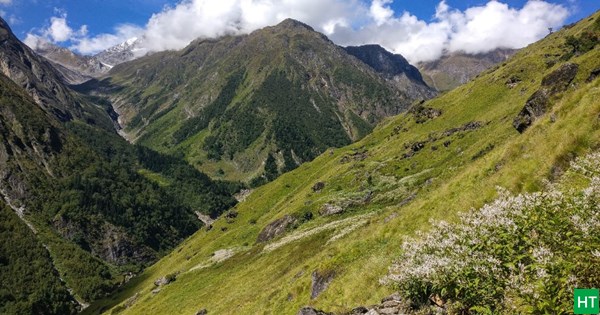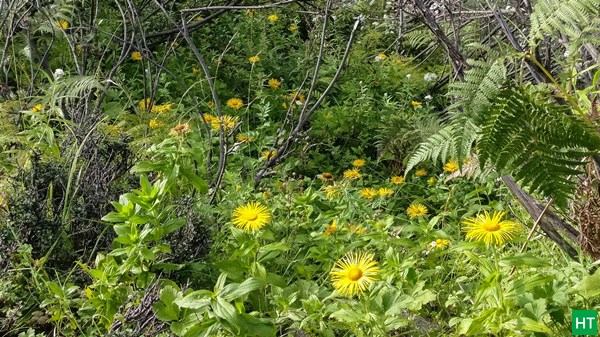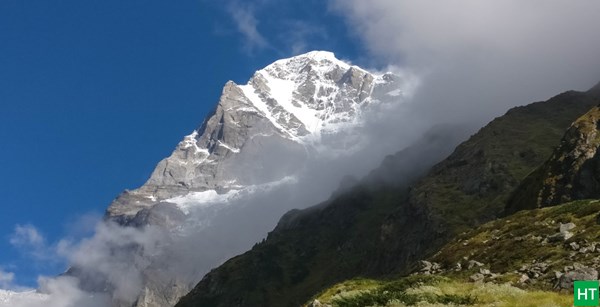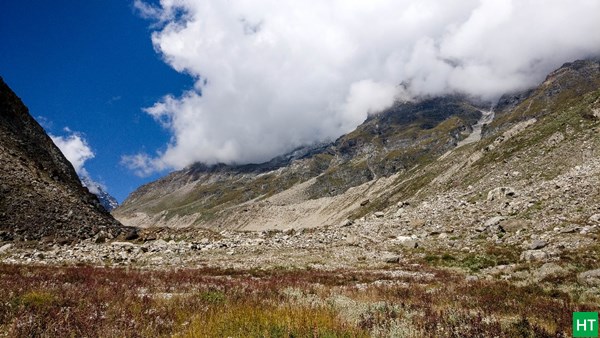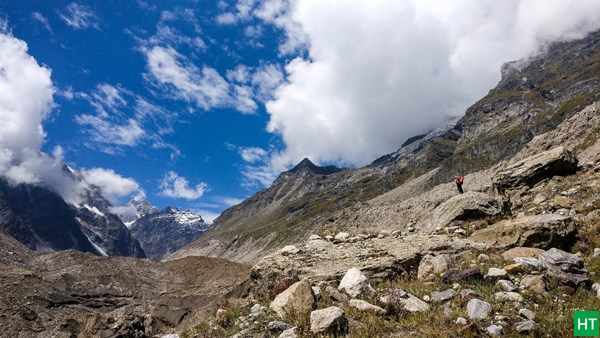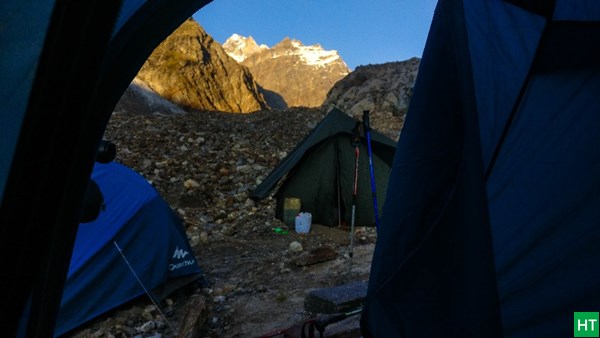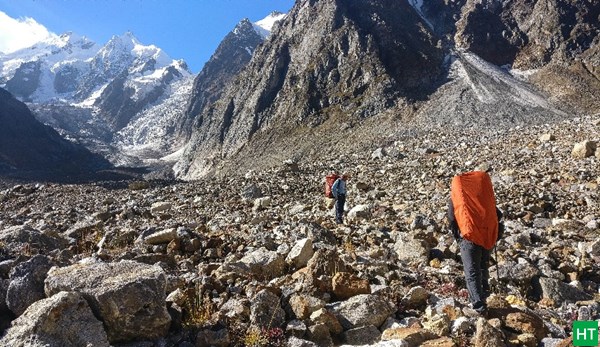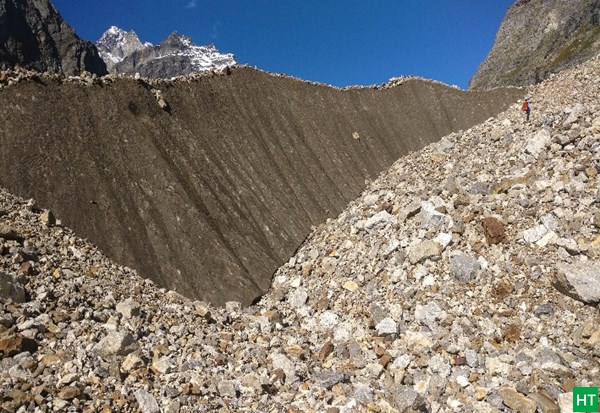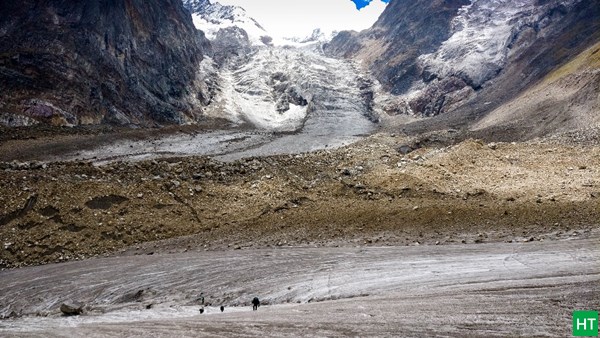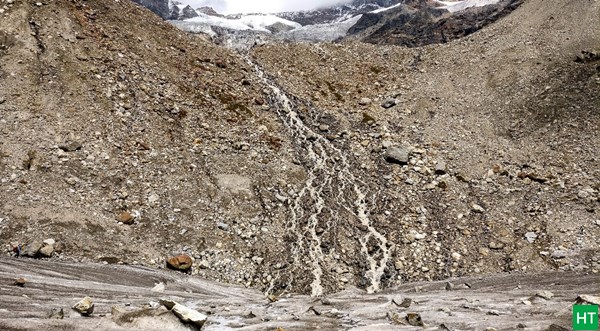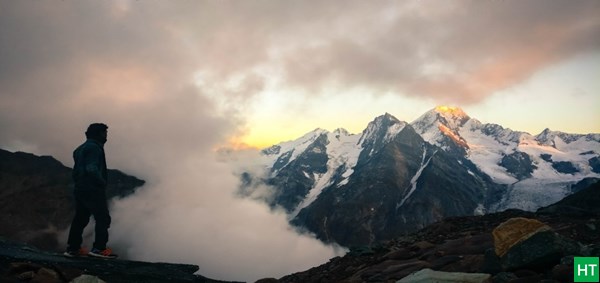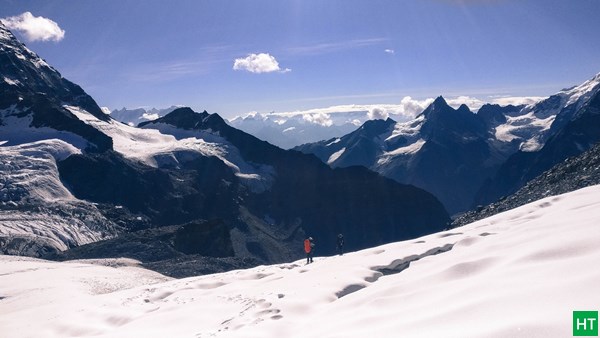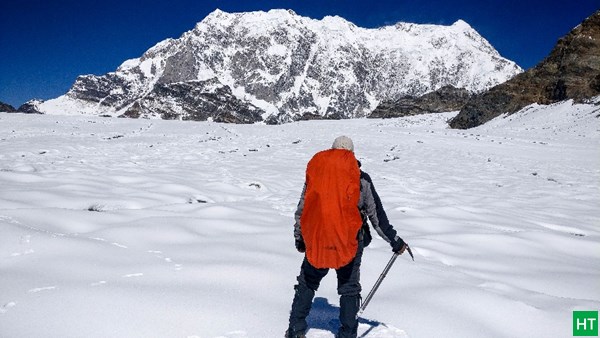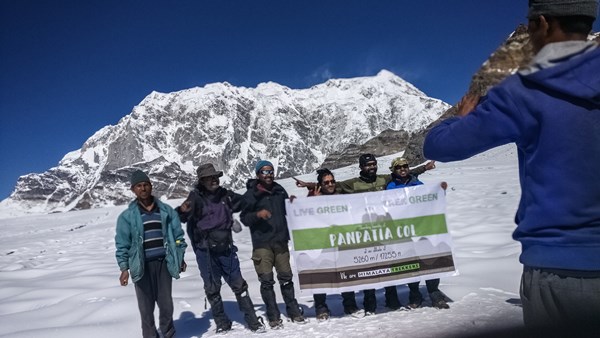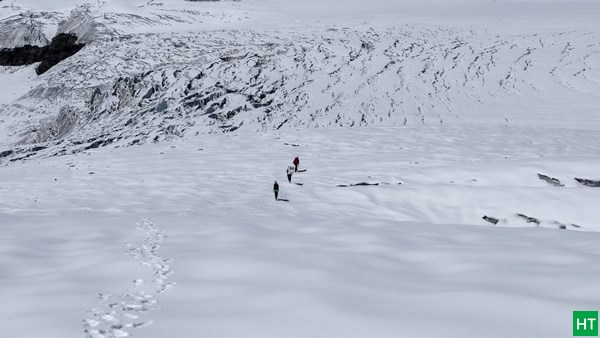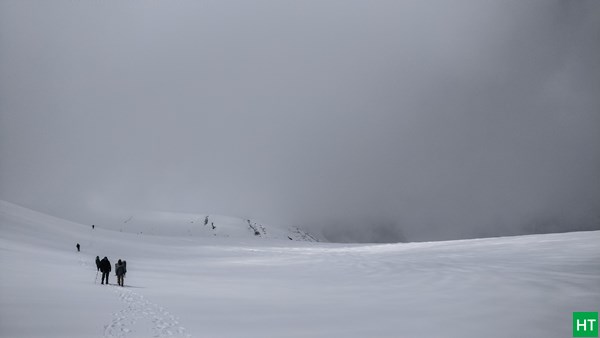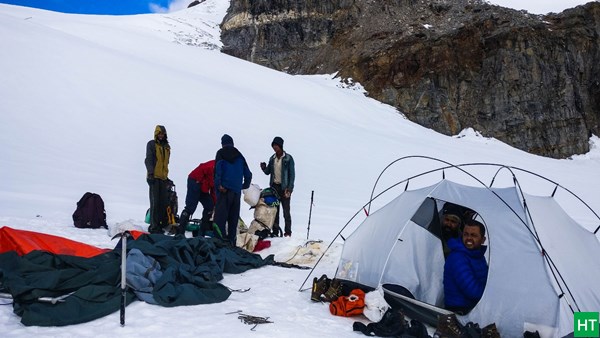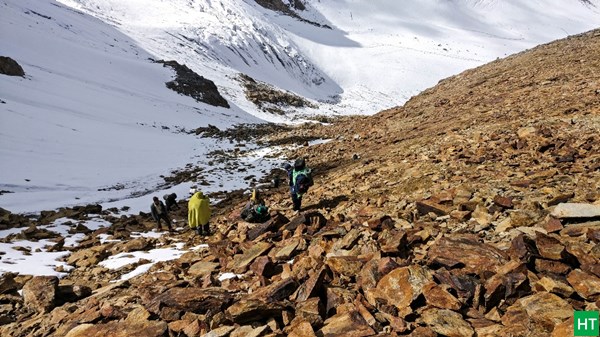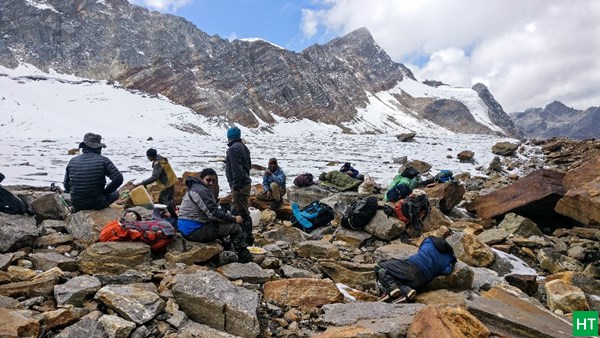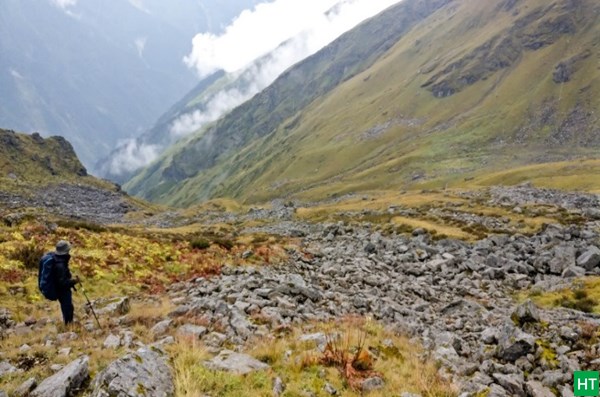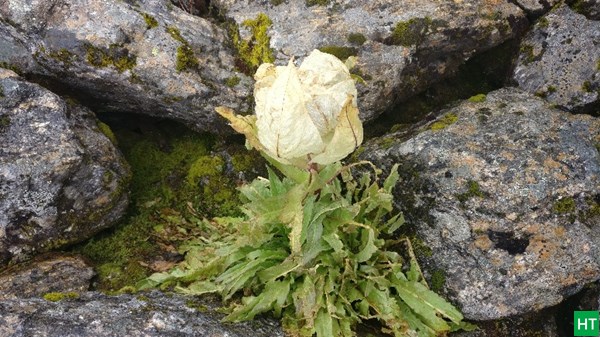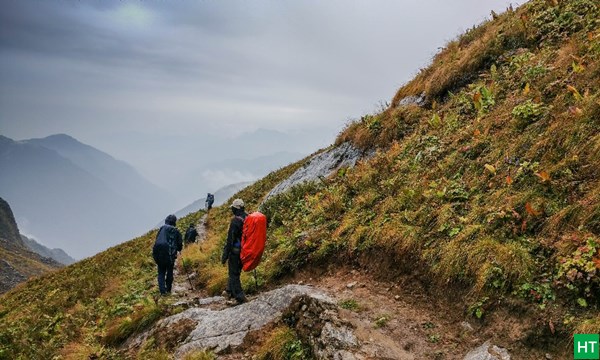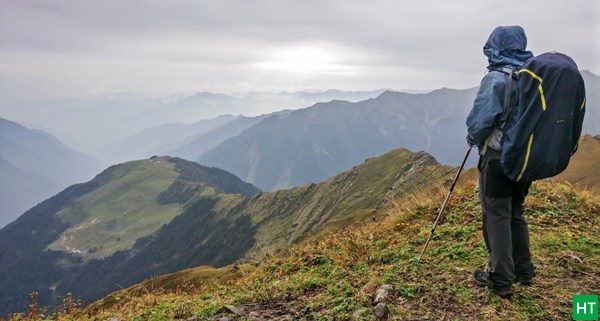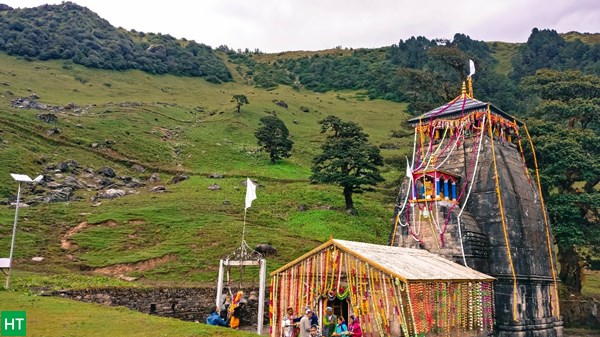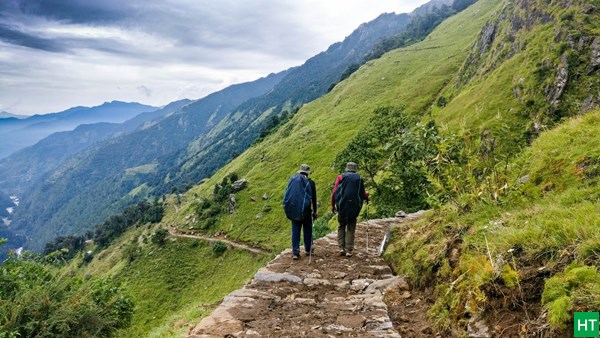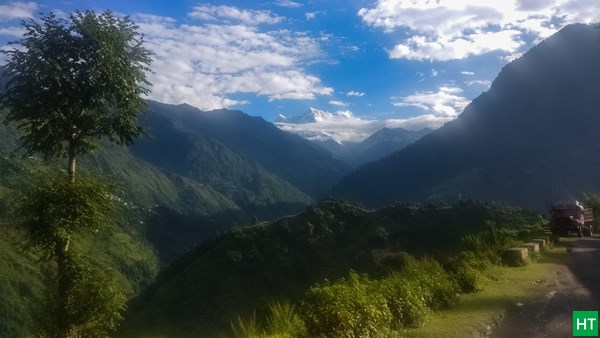Beginner’s Guide for Trekking in the Himalayas: Tips on Planning and Execution
- Trek Preparation, Trekking Tips
- beginner's guide for trekking, beginner's guide for trekking in the himalayas, dos and don'ts in himalayan trekking, mountain rules and etiquettes, mountain treks for beginners, planning a himalayan trek for the first time, trekking and hiking in the himalayas, what to do in a trekking trip
The majority of you who have searched for this topic are probably planning your first trek in the Himalayas. Otherwise, you may already have booked a trek and are trying to understand what an adventure tour would be like on the mountain.
Yes, you read that right—an adventure tour. Trekking in the Himalayas is indeed an adventure tour, and it will have its share of risk elements as well. But don’t worry; you have a certain amount of risk even when you cross a road or drive a car. Besides this, trekking is not a sport, at the same time does require certain physical strength and endurance, along with mental preparation.
Now let’s carefully go through the major planning parts and till you complete your journey along with our insights and pro tips. Remember that it is almost impossible to write an “All in One or Complete Guide” on this topic. In spite of the fact, we put in our due diligence so that we don’t miss any important points for you and even work as your one stop trekking guide. Don’t follow blindly whatever is written or implied, including our website! While most of these are facts, a few are opinions based on professional experience on this topic or a holistic view of mountains in general.
Also, this article is not about recommending the best treks for beginners in XYZ and so on, but rather equipping you with a meticulous understanding of the fundamentals of a trekking vacation in the Himalayas. On top of that, you get a broad understanding of how to choose a trek that suits you the best.
Plan well ahead of the execution:
Planning the right steps from the beginning would surely help you complete your first Himalayan journey, making it safe and memorable. It can be a life-changing experience quite easily for you. However, a trip at an altitude above 3000 m or 10000 ft will have uncertain natural or inclement weather conditions; altitude itself is a barrier, and adjusting to a different daily routine for most of you can be a potential challenge on a trek. Don’t take it too easy or casually, and be prepared. That can easily make life difficult on mountains. Simply think that mountains have their own natural rules, and we just need to abide by them. Rest can be a game changer in your life.
The Planning Phase: From now till you start your journey
Now we will discuss the points, which are essentially your preparation. It’s better to pay attention to details if you have made up your mind in favour of a Himalayan trek. When you get time, do go through the given links for more understanding. Note the headings so that you can do your own re(search) on the points mentioned here.
Choose the right season or time for your trek:
Any trekking route in the Himalayas will have its own specified season(s) that are supposedly the “best time to visit”. During this period, a particular route showcases most of the beauties and features it is known for. Additionally, you get a safer passage to complete your trek as well.
Each such suitable season for a particular trek will have different beauties and offerings, and you don’t get them all together. But trust us, each season will delight you with something or other.
Decide on the trekking grade:
All Himalayan treks are graded according to their difficulty level to complete. Consider starting with an Easy grade trek . You should try a route that will be well within your control as a whole; don’t test any extremes. Most likely first time you are going to a high altitude place and stay above ~ 3000 m/10000 ft.
People with previous hiking experiences in low altitudes who are living an active lifestyle or following a fitness schedule for the time being may consider a Moderate level trek, going up to the highest altitude of ~ 4300 m – 14000 ft while camping or sleeping below 4000 m – 13000 ft of altitude.
Research the trekking route or the region:
Now these treks are located in different states or destinations across the Indian Himalayas. Try to see which ones suit you best, your preferred locations that match your vacation time, and any other preferences. All the destinations are indeed beautiful, but at times it’s a matter of convenience to choose a particular region.
Sometimes you may have heard about or been recommended a particular trek route. Before taking up your trek, research your chosen trekking route thoroughly. Get information on the trail conditions, weather patterns, altitude changes, and any cultural and natural landmarks along the way. This will help you prepare mentally and physically for the trek.
Pro tip: Consider choosing a trek from a shortlist that most matches with the above mentioned three points.
Talk with someone you know:
This is a quite natural thing that you would like to talk to someone you know who has been on treks, preferably in the Himalayas. Or maybe you just heard about trekking from a person, and now you are here as part of your research. First-hand information from people you know matters, as they should have taken many of these steps.
Otherwise, just get in touch with us so that we can talk. Often, it is easier to comprehend or understand when we talk.
Consider bookings through a reputed trekking tour operator/agency for trekking:
As a first-timer, it’s not normal that you can arrange a DIY (a.k.a. independent) trek in the Himalayas on your own. Well, maybe if you have highly experienced friends or family members to make a group. There are many logistical things the team would need to take care of to arrange an independent trekking tour.
Else, simply do your research and choose a professional organisation that takes care of the trekking logistics and helps you with many other things that you require. E.g., almost half of the points we discuss here are automatically taken care of by a reputed trekking company.
As a trekking tour operator, we offer Fixed Departure Treks that you may join as a solo member or with your group. Dates, costs, and services for these treks are fixed. Alternatively, if you already have your own group of people, you may opt for a Customised tour. Here dates, itinerary, level of service, and itinerary are tailor-made as suits your group. Cost depends on primarily the number of persons and level of service you prefer.
Pro tips: You pay for the professinal knowledge and on ground quality support. Do thorough research before choosing your trekking organisation. Consider getting a first-hand reference or recommendation from someone you know. There are many companies that are essentially travel portals or marketplaces, and Trek is one of the many available products and tickets they sell! It all depends on how the on-ground tour operator, who is responsible for managing and running the show, handles things! We suggest you avoid using a “booking agency”, unless highly trusted.
Keep a provision for an extra (buffer) day in your itinerary:
It may be pretty helpful to keep a buffer day or two in your travel itinerary. Keep this reserve day at the end of your trek. Either use it during an unforeseen event on the trek or later you just chill out a day after your trek.
Depending on a trek, sometimes it is convenient to reach the nearest railway station or airport on Day 0. Plan your travel itinerary accordingly.
Flexible flight tickets and reservations can be handy in dealing with such conditions.
Visit a doctor and consider getting a travel cum medical insurance for the trip:
It is always advisable that you visit a doctor well in advance before starting your trek. You must consult your doctor if you are already on medication or have an existing medical condition.
As already mentioned, trekking in the Himalayas involves certain risks, such as bad weather, accidents, and natural disasters. Consider getting comprehensive travel insurance that covers medical emergencies, evacuation, and repatriation. Check with your trekking company to see if they can arrange one for you.
Arrange the necessary permits and documents:
Treks within the Himalayas are in remote locations and require permits from various governing bodies, including the concerned forest department or district administration offices, etc. If you book with a company, they will obtain the necessary permits.
Always carry the original identity card with your address on it. It can be your AADHAR, driving licence, voter ID, passport, or any other government ID card (a PAN card is not a valid ID card as it doesn’t have an address on it). Keep one or two photocopies of the original. In some treks, you need to bring your recent passport photo for permit procedures.
Additionally, you may have to submit a medical fitness certificate from a doctor for some treks where it is applicable. As it’s an adventure activity, usually companies will require an indemnity clause signed by you as well.
Get fit for the trek:
Trekking in the Himalayas can be physically demanding, so it’s essential to be in good physical shape. If you are already on a fitness schedule, you are surely at an advantage. Otherwise, plan to start a fitness programme well in advance, focusing on cardio and a few strength training exercises. Consult a physical trainer or your tour operator before undertaking any such programme. You can also do some practise hikes in your local area to build up your stamina.
Remember that you will enjoy the trail and surroundings more when you are reasonably fit for a given trek.
Here is a starter for the beginners:
Check the list of things to carry:
This is a very important aspect so you are safe and comfortable on the mountains.
- Your 3-layers of clothing (a must on the mountains above ~3000 m/10000 ft):
- Sleeping bag (generally, it is included in the package by your tour operator, like we do in our treks)
- Your trekking shoes or boots
- A rucksack or a backpack with a raincover
You may buy, borrow, or rent a few items. On many easy treks, you can reuse the already existing ones that you have for a different purpose. Consult our article on renting vs. buying trekking gear before deciding on a particular item.
Do carry a personal first aid and general medicine kit.
There are other small yet essential things to pack. Check out our detailed list of things to carry on a Himalayan trek below:
Pack smart and light:
The key to backpacking is to pack all the essentials while keeping your pack light. You don’t want to carry unnecessary items that are heavy on you. We recommend that you invest in buying good quality items so that they serve you safely on the mountain in the long run. At the same time, these items are lighter in weight and known for their wider range of use in different types of situations and conditions.
Budget your expenses:
Now comes the budget. Estimate based on the following major expenses:
- Your tour package cost (which usually takes care of your accommodation, meals, trekking guide and support staff, camping equipment and logistics, permits and levies charged by the governing authorities, etc.)
- Travelling to basecamp and returning home
- Any other accommodation and meals outside the trek but which may be required during your travel
- Purchasing or renting trekking gear
- Any other personal expenses or some buffer expenses
Pro tip: Keep adequate cash on hand for any on the spot expenses and as a buffer. Online transactions can be very difficult in remote areas due to limited network connectivity.
Don’t jump into a trek at the last moment:
As you can see, there is quite a bit of planning ahead for your trek, so just don’t register or book a trek at the last moment. As a beginner, take your time, plan well in advance, and then get things arranged. There is always a next time, no matter how tempting if you could manage to join at the 11th hour. I is very likely that if you are very late to decide, you may remain unprepared and put yourself and your team at risk.
Trek Execution Phase: Follow these when you are actually on the trek
This is an equally important phase and deals with the dos and don’ts on the ground. To adjust yourself on a mountain, you need to focus on two key areas. One area is altitude and how you are coping with it physically following certain rules. Another area is being that how do you interact with the environment as a whole by following certain norms, decorums, or etiquette, whatever you like to call it.
Stay hydrated and enjoy your meals:
It is vital to drink enough water and fluids throughout the day to remain hydrated. Fill your water bottle(s) at a campsite and ask your guide about a possible opportunity to refill while you walk. Drinking water is collected from a stream or from a natural source. Avoid drinking water from unknown sources.
Remember that due to the cool or cold weather, you may not feel like drinking adequate water. This may directly lead to a muscle cramp or create other health problems on the mountain.
Eat sufficient food, which gives you much needed energy and nutrition to continue your trek. Ideally, you should eat at least the same amount you eat back at home. A fractional reduction can be due to the new conditions; however, a moderate loss of appetite is an early indicator of mountain sickness.
Acclimatise properly:
High altitude means less pressure, or thin air, and less oxygen to breathe. Acclimatisation refers to the physiological changes that occur when you arrive at a high altitude and allow the body to function properly in the low oxygen environment. E.g., your ear pops on a plane, which is the adjustment your body does due to the pressure difference.
It is recommended that you sleep inside the tree line for three nights before reaching a higher altitude. Usually tree line ends between 3300 to 3600 m (11,000 and 12,000 ft) depending on a region or particular route. A well thought-out itinerary will consider these factors and help you in the acclimatisation process.
If your body doesn’t acclimatise, you may notice sustained symptoms, which include headache, nausea, shortness of breath, and dizziness. difficulty sleeping, and the inability to exercise or move. These are signs of Acute Mountain Sickness (AMS), although they are uncommon below 4000 m – 13000 ft. When someone is affeted by AMS, it is a must to bring the person as quickly as possible.
Avoid alcohol and smoking which seriously harm you on the mountain.
Pro tip: Cool down once you reach your campsite for the day. Don’t get inside the tent and rest immediately, even if you are feeling unwell. Rather, put on warm clothes, walk around a bit, chit chat with your fellow trekkers, sip a cup of tea, and enjoy and adjust to the environment.
Inform any irregular or uncomfortable physical condition to your trek guide:
Always inform your trek guide or leader about any discomfort rather than keeping it a secret. This may help to identify any altitude conditions and act accordingly.
Follow the instructions of your trek guide or leader:
This is self explanatory. Be it how you walk or manoeuvre on the trail or maintaining certain rules. They are experienced in these conditions and well aware of the situation. After all, your guide and support team are responsible for your well being on the mountains.
Start early and finish early:
A regular day on the trail can be quite different from your daily routine back home. During a trek, you wake up early to witness the sunrise views, get refreshed, and have your breakfast. Pack everything and be ready to start at the latest by 7:00 – 7:30 am.
If you start early, most likely you will reach your day’s destination on time and have plenty of time to explore the campsite in the afternoon. Similarly, you finish your dinner and call it a day early so that you get enough sleep.
Set your pace:
It is important to find the pace that suits you. Don’t walk too fast or too slowly, as either of these will make you tired. Keep walking at a slow but steady pace. Take short breaks to enjoy nature or to catch your breath.
Follow mountain manners and etiquettes
Mother nature likes good manners. Be modest and humble in the mountains. A smile goes a long way. Your flexibility to cope with and adjust according to the conditions is certainly a great advantage.
Work as a team on mountain:
Just remember the age-old saying, United we stand, divided we fall. Gel well with your team mates. Your team’s bonding plays a role here as well.
Respect local customs and traditions:
The Himalayas are a culturally diverse region, and it is important to respect local customs and traditions. Dress modestly, remove your shoes before entering temples or monasteries, and ask permission before photographing people.
Care for the environment, leave no footprints:
The Himalayas are a fragile ecosystem, and it’s important to respect and take care of the environment while trekking. This is the only way we can do our part to preserve this magnificent gift of nature for our future generations.
Strictly avoid littering, stick to the designated trails, and do not disturb the local flora and fauna. Don’t leave any of your non-biodegradable waste on the mountain; carry these items back and recycle or reuse them whenever possible.
If you have continued till now, most likely it has clarified many queries and doubts that you had as a beginner. If you need some more information or understanding, please feel free to get in touch in one of the following ways:
